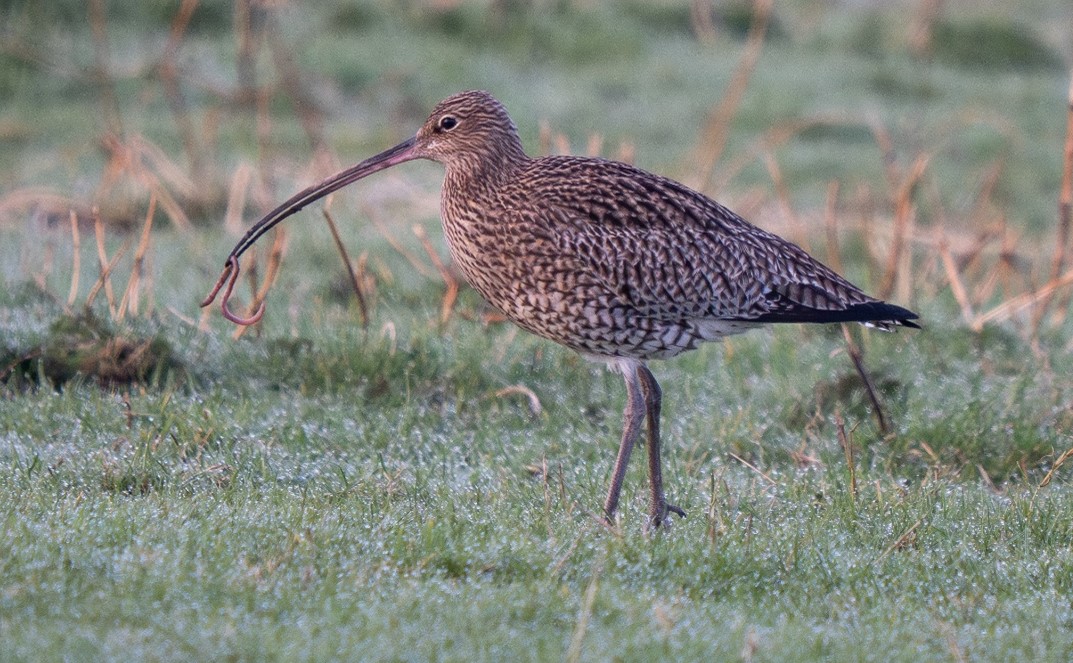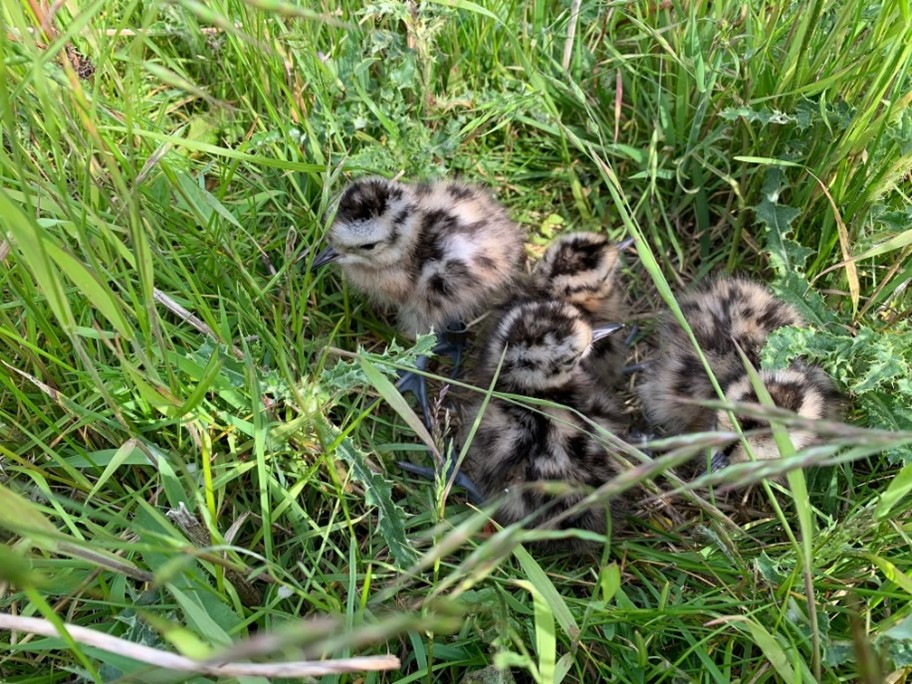Curlews can breed in a variety of habitats in England, including upland moorland, hay meadows, wet grassland, heathland, improved grasslands, lowland bogs and arable fields. They are typically birds of open landscapes and generally avoid wooded areas. In the Upper Thames, Curlews use the suitable habitats that are available to them - these are primarily grassland habitats, including ancient hay meadows, lowland wet grassland and both semi-improved and improved agricultural grasslands.
Many of these habitats are located in the floodplain of the River Thames and its tributaries. This is because extensive areas of suitable habitat in the floodplains have survived, whilst decades of agricultural improvement have led to the loss of suitable grassland habitat across the wider landscape. Some Curlews continue to breed in agricultural grasslands away from the floodplain, and these can be productive sites for them if managed sensitively. Very occasionally a pair will also nest in an arable field, where this is adjacent to grassland, but this is very much the exception.

The density of Curlews is strongly linked to the quality and extent of available habitat, and the productivity of birds in each location (which is also linked to generalist predator abundance). In the Upper Thames, the highest density of Curlews is at Otmoor and in the hay meadows beside the Thames, for example at Chimney Meadows. At Otmoor, the fields with the highest density of Curlews - sometimes two pairs per field - are wet grasslands dotted with pools and ancient species-rich hay meadows.
With a choice of options available to them, what grassland attributes might Curlews be looking for looking?
First of all, they are looking for plenty of food. Earthworms, especially. When they return to their traditional grassland breeding territories in early Spring, they need to feed well. This will ensure the female is soon ready for egg laying and the male is prepared for the rigors of what will -hopefully - be a long and successful breeding season. They also need to find a suitable place to nest. Somewhere where the nest can be hidden from the eyes of predators, and which also affords the incubating bird a good view of their surroundings to spot trouble. Sometimes a patch of rushes provides a perfect location or perhaps a large tussock of grass.

Many of our adult Curlews have visited their territories for years and will know where the best places are likely to be for raising their chicks. Curlew chicks are ‘precocious’ and feed themselves as soon as they hatch. The parent’s role is to brood and guard the youngsters and lead them to what will hopefully be safe feeding areas rich in food. The chicks feed by picking invertebrates from the leaves of plants within their reach. We have surprisingly limited knowledge of their diet, but it is sure to include a wide range of grassland invertebrates – spiders, grasshoppers, beetles etc. By June, which is the peak month for chick-rearing, species-rich grasslands are alive with minibeasts. Abundance and variety of prey will help the chicks grow quickly, and taller swards also enable them to remain hidden from avian predators.

Livestock provide a crucial ‘service’ to the Curlews by keeping the sward in check and creating opportunities for nesting and chick rearing. High stocking levels can result in a sward that is too short to conceal the nest, and if a nest is made, it may well get trampled; too few animals and the grass gets dense and impenetrable. The ‘sweet spot’ for Curlews seems to be low density, seasonal grazing, creating a grassland ‘mosaic’ - which can include harvesting grass for hay, but this is best done once the chicks can fly.